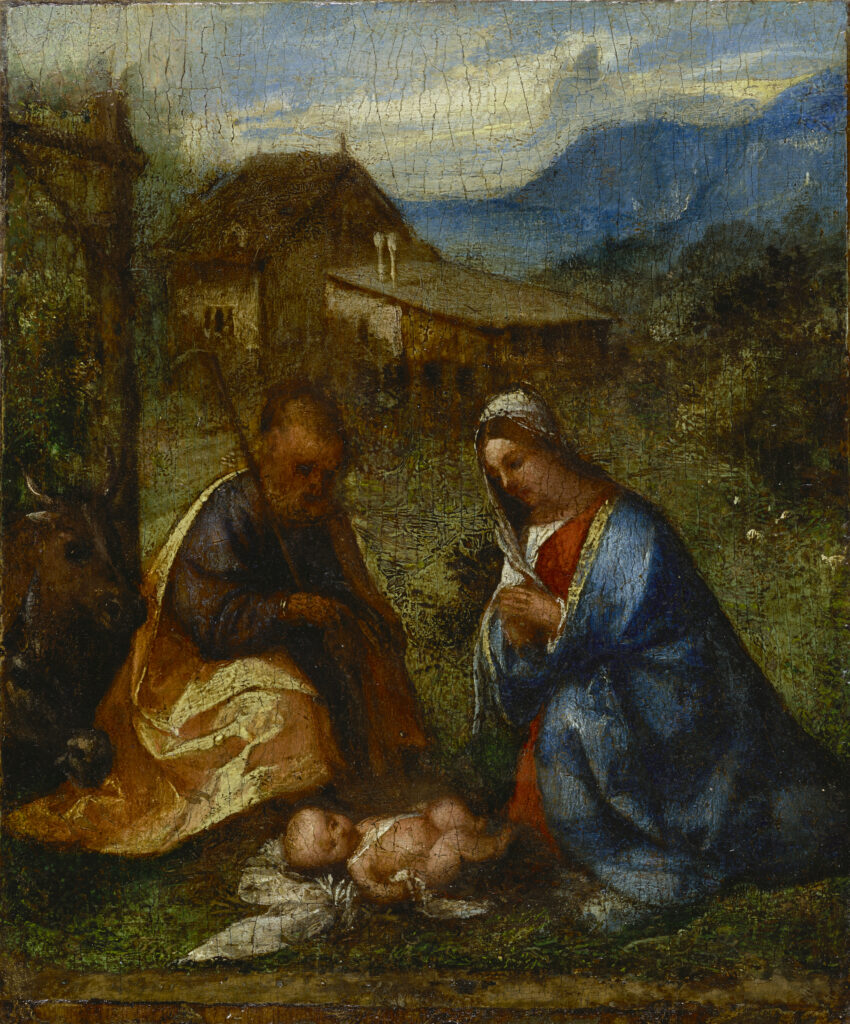The Adoration of the Christ Child (work of art)
Artwork Info
Key Ideas
- This painting of the baby Jesus and his parents is an example of Renaissance humanism.
- The Renaissance began in Italy in the 14th century and lasted over 300 years. Renaissance literally means “rebirth.” The term refers to the revival of ancient Greek and Roman society.
- Humanism focuses on human interests over religious or spiritual matters.
- Titian was an Italian painter during the 16th century. He is best known for his expert use of color. Many of his paintings depict humanist values.
Learn More
The scene painted on this small panel was inspired by a Swedish saint’s mystical vision of the Nativity of Christ. Bridget of Sweden claimed she saw the infant Jesus “lying on the earth, naked and glowing in the greatest of neatness.” Even though this is a biblical scene, none of the figures are shown wearing a halo. This artistic choice makes the figures look more like ordinary people than divine beings. It also demonstrates humanist values in a Renaissance painting. Humanism focuses on the human experience. It emphasizes human interests like thought, reason, and culture (rather than the divine or supernatural).
This painting was created by an Italian artist named Titian. He is regarded as one of the great colorists in the history of art. His signature style included thick brushstrokes and a complex layering of colors. Like many artists of the Renaissance, he often represented humanist values in his work.
Titian lived and worked in Venice, Italy, in the 16th century. Venice was a thriving center for art and culture during the Renaissance. The Renaissance was an era that began in Italy in the 14th century. It lasted over 300 years. It is characterized by a renewed interest in ancient Greek and Roman culture. Many famous artists (such as Leonardo da Vinci and Raphael) lived during the Renaissance.
Additional Resources
Resources for Teachers
- Read an essay about Titian’s life and work.
- Watch a video about the artist’s early years in Venice.
- Read an essay about depictions of Jesus’s life during the Middle Ages and Renaissance.
Resources for Students
- Watch a video about Titian’s painting technique.
- Watch a video to discover how red pigment was made during the artist’s lifetime.
- View a collection of paintings by the artist.

